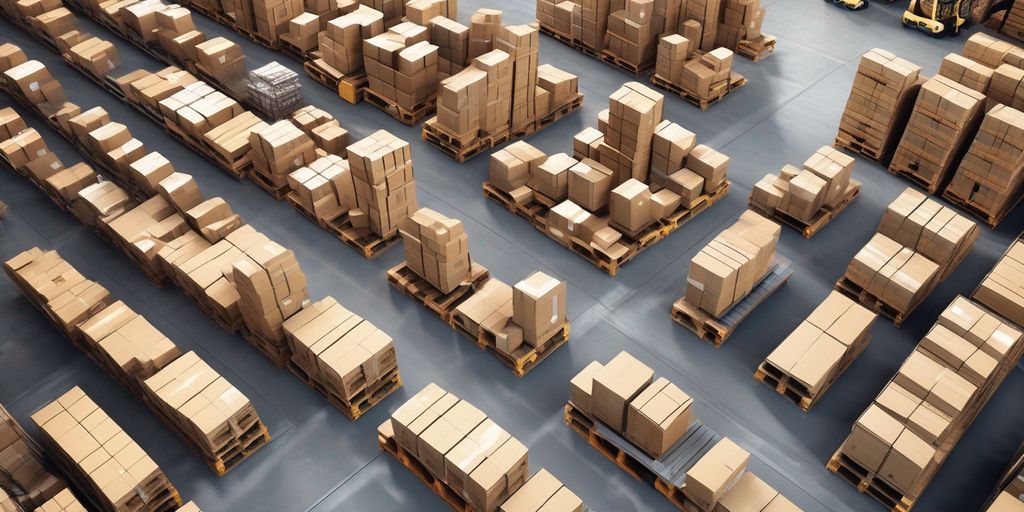Las consideraciones clave al comprar un montacargas usado — overview
Comprar un montacargas usado puede ser una opción inteligente si sabes qué buscar. Ahorra dinero y puede ser tan confiable como uno nuevo si encuentra el adecuado. Sin embargo, hay varios factores importantes a considerar para asegurarse de realizar una inversión inteligente. Esta guía le ayudará a comprender qué comprobar y tener en cuenta al comprar un montacargas usado.
Conclusiones clave
- Verifique el historial de uso del montacargas para comprender sus aplicaciones anteriores y registros de mantenimiento.
- Inspeccione el estado físico, incluidos neumáticos, ruedas y cualquier signo de fugas o daños.
- Considere la marca y la disponibilidad de repuestos para garantizar un fácil mantenimiento y reparación.
- Pruebe la batería y el tipo de combustible para asegurarse de que estén en buenas condiciones y sean compatibles con sus necesidades.
- Asegúrese de que todas las funciones de seguridad funcionen, incluidos los cinturones de seguridad, los frenos y las alarmas de advertencia.
Evaluando el Historial de Uso del Montacargas
A la hora de comprar una carretilla elevadora usada, comprender su pasado es fundamental. Esto le ayuda a evaluar su rendimiento futuro y sus posibles problemas. Estas son las áreas clave en las que centrarse:
Comprendiendo Aplicaciones Anteriores
Conocer cómo se utilizaba la carretilla elevadora antes puede brindarle información sobre su desgaste. Por ejemplo, las carretillas elevadoras que se utilizan en cámaras frigoríficas pueden tener características anticorrosión. Pregunte sobre los entornos en los que operaba y los tipos de cargas que manipulaba.
Verificación de desgaste y deterioro
Busque señales de desgaste. Inspeccione los neumáticos, el mástil y las horquillas para detectar posibles daños. Una carretilla elevadora que se utiliza a diario mostrará un mayor desgaste que una que se utiliza ocasionalmente. Verifique las horas registradas para comprender la intensidad de su uso.
Revisando Registros de Mantenimiento
Los registros de mantenimiento son una mina de oro de información. Te indican si la carretilla elevadora ha recibido el cuidado adecuado. El mantenimiento regular y las reparaciones oportunas pueden prolongar su vida útil. Pide un historial de mantenimiento detallado para asegurarte de que no haya problemas ocultos.
Inspeccionando la Condición Física

A la hora de comprar una carretilla elevadora usada, es fundamental inspeccionar minuciosamente su estado físico. Esto le garantiza evitar costes de reparación inesperados y mantener los estándares de seguridad.
Examinando Neumáticos y Ruedas
Comience por revisar los neumáticos para ver si presentan signos de desgaste . Busque bandas de rodadura bajas, grietas o pinchazos. Si la banda de rodadura está desgastada más allá de la línea de seguridad, será necesario reemplazar los neumáticos. También puede utilizar la prueba del centavo: coloque una moneda en la ranura del neumático y, si puede ver la parte superior de la cabeza de Lincoln, la banda de rodadura está demasiado baja.
Verificación de fugas y niveles de fluidos
Inspeccione la carretilla elevadora para detectar fugas alrededor del radiador, los cilindros del mástil y la transmisión. Las fugas pueden indicar daños que podrían requerir reparaciones costosas. Además, controle los niveles de los líquidos, incluidos el aceite del motor y el líquido de la transmisión. Los niveles bajos pueden indicar fugas o un mantenimiento deficiente.
Evaluando el mástil y las horquillas
El mástil y las horquillas son componentes críticos de un montacargas. Examine el mástil para verificar que funcione sin problemas y verifique si hay grietas o daños. Mire de cerca las horquillas para detectar curvas o grietas y compare el grosor del talón de la hoja de la horquilla con el vástago vertical de la horquilla. Si el talón es más delgado, indica un desgaste significativo y es posible que sea necesario reemplazarlo.
Una inspección exhaustiva del estado físico puede ahorrarle costes de reparación inesperados y garantizar la longevidad del montacargas.
Teniendo en cuenta la marca y la disponibilidad de piezas

Al comprar una carretilla elevadora usada, la marca que elija puede marcar una gran diferencia. Optar por una marca de buena reputación puede ser más costoso, pero a menudo garantiza durabilidad y un mejor rendimiento. Las marcas establecidas generalmente significan un acceso más fácil a las piezas de repuesto. Puede ser frustrante tener una carretilla elevadora averiada y no encontrar las piezas adecuadas para repararla.
Marcas de buena reputación frente a marcas menos conocidas
Elegir una marca conocida puede ahorrarle muchos problemas a largo plazo. Estas marcas son conocidas por su confiabilidad y, a menudo, cuentan con una red de distribuidores y centros de servicio. Por otro lado, las marcas menos conocidas pueden ser más baratas al principio, pero podrían costar más a largo plazo debido a que las piezas son más difíciles de encontrar y hay menos opciones de servicio.
Disponibilidad de Piezas de Repuesto
Antes de realizar una compra, verifique si hay repuestos disponibles para la carretilla elevadora . Si opta por un modelo único que requiere piezas específicas, debe evaluar si puede acceder fácilmente a ellas, cuánto cuestan y con qué frecuencia puede necesitar reemplazarlas. El mismo principio se aplica al mantenimiento de la carretilla elevadora. Si bien algunos distribuidores pueden ofrecer un equipo de soporte para realizar reparaciones y mantenimiento, otros no lo harán.
Costo de Piezas de Repuesto
Las piezas de repuesto pueden acumularse rápidamente. Asegúrese de tener en cuenta el costo de las piezas al establecer su presupuesto. A veces, una carretilla elevadora más barata puede resultar más cara si las piezas son costosas o difíciles de encontrar. Considere siempre los costos a largo plazo, no solo el precio de compra inicial.
Prueba de la batería y tipo de combustible

Evaluación del estado de la batería para montacargas eléctricos
Al comprar una carretilla elevadora eléctrica, el estado de la batería es crucial . Las baterías suelen durar entre 5 y 7 años. Para calcular la vida útil restante, pregunte al distribuidor sobre el historial de uso de la carretilla elevadora, como la cantidad de turnos que operó. Busque señales de daños, como fugas de ácido y corrosión. Verifique la placa de datos de la batería para asegurarse de que tenga el peso y el tamaño correctos para la carretilla elevadora.
Comprender la eficiencia del combustible para montacargas no eléctricos
En el caso de las carretillas elevadoras no eléctricas, es fundamental comprender la eficiencia del combustible . Ya sea que la carretilla elevadora utilice diésel, propano o gas, debe verificar la eficiencia con la que utiliza el combustible. Una carretilla elevadora que consume demasiado combustible puede resultar costosa a largo plazo. Asegúrese de verificar el tipo de combustible y su compatibilidad con sus operaciones.
Verificando la compatibilidad del tipo de combustible
Es importante asegurarse de que el tipo de combustible del montacargas se ajuste a sus necesidades. Los diferentes tipos de combustible tienen diferentes ventajas e inconvenientes. Por ejemplo, las carretillas elevadoras de propano se utilizan a menudo en interiores debido a sus menores emisiones, mientras que las carretillas elevadoras diésel son más potentes y adecuadas para uso en exteriores. Verifique que el tipo de combustible se ajuste a sus requisitos operativos.
Asegurando que las características de seguridad funcionen
Al comprar un montacargas usado, es fundamental asegurarse de que todas las características de seguridad estén en buen estado de funcionamiento. Esto garantiza la seguridad del operador y el cumplimiento de las normas.
Inspeccionando cinturones de seguridad y guardas
Los operadores deben asegurarse de que todos los dispositivos de seguridad, como los cinturones de seguridad y los protectores superiores, estén instalados y funcionen correctamente. Compruebe si hay daños o desgaste que puedan comprometer la seguridad.
Pruebas de frenos y luces
Los frenos y las luces son esenciales para una conducción segura. Pruebe los frenos para asegurarse de que funcionan sin demoras. Verifique que todas las luces, incluidas las luces de seguridad, estén en funcionamiento.
Verificación de alarmas y indicadores de advertencia
Asegúrese de que todas las alarmas e indicadores de advertencia funcionen. Esto incluye verificar la bocina, los ajustes del asiento y cualquier otro indicador relacionado con la seguridad. Un vendedor confiable enfatizará la importancia de estas características para garantizar una decisión de compra segura y eficiente.
Estableciendo un Presupuesto Realista
A la hora de comprar una carretilla elevadora usada, es fundamental establecer un presupuesto realista . Esto garantiza que no gaste de más y que pueda cubrir cualquier coste inesperado que pueda surgir.
Estimando los costos iniciales de compra
Empiece por comprender el precio de compra inicial. Las carretillas elevadoras usadas son generalmente más baratas que las nuevas, pero los precios pueden variar según el modelo, la antigüedad y el estado. Por ejemplo, un montacargas con cojín de GLP usado de 5,000 libras puede costar entre $ 9,900 y $ 21,900, mientras que uno nuevo puede costar entre $ 24,000 y $ 30,000.
Considerando los costos potenciales de reparación
Las carretillas elevadoras usadas suelen tener costos de mantenimiento más altos debido al desgaste. En promedio, una carretilla elevadora usada puede costar alrededor de $3,50 por hora en mantenimiento, en comparación con $1,00 por hora por una nueva. Tenga en cuenta estos posibles costos de reparación en su presupuesto para evitar sorpresas.
Considerando el Mantenimiento a Largo Plazo
El mantenimiento a largo plazo es otro aspecto importante a tener en cuenta. El mantenimiento regular es esencial para que la carretilla elevadora funcione de manera segura y sin problemas. Esto incluye los costos de reemplazo de piezas, controles de rutina y cualquier reparación necesaria. Si planifica estos gastos, puede asegurarse de que su carretilla elevadora siga funcionando de manera segura durante muchos años.
Comprender sus necesidades específicas y establecer un presupuesto realista ayudará a reducir las opciones y hacer que el proceso de selección sea más manejable.
Conclusión
En conclusión, comprar una carretilla elevadora usada puede ser una decisión inteligente si se toma el tiempo para considerar todos los factores importantes. Siempre verifique el historial del montacargas, inspeccione minuciosamente y asegúrese de que satisfaga sus necesidades específicas. Recuerde priorizar la seguridad y pensar en los costos de mantenimiento futuros. Si hace su tarea y toma una decisión informada, podrá encontrar un montacargas confiable que le servirá bien a su negocio en los años venideros.
Preguntas frecuentes
¿Qué debo comprobar en el historial de un montacargas usado?
Mire cómo se usaba antes el montacargas. Verifique sus registros de mantenimiento y vea si se usó en ambientes hostiles. Conocer su pasado puede decirte mucho sobre su estado.
¿Cómo puedo saber si los neumáticos de un montacargas usado están en buen estado?
Inspeccione los neumáticos en busca de signos de desgaste, como grietas, banda de rodadura baja o fragmentos. Los buenos neumáticos deben tener suficiente banda de rodadura y ningún daño visible.
¿Por qué es importante elegir una marca de buena reputación para una carretilla elevadora usada?
Las marcas de renombre suelen ser más duraderas y ofrecen un mejor rendimiento. También facilitan la búsqueda de repuestos cuando necesita reparaciones.
¿Qué debo buscar en la batería de una carretilla elevadora si es eléctrica?
Verifique la edad de la batería y qué tan bien retiene la carga. Reemplazar una batería puede resultar costoso, así que asegúrese de que esté en buenas condiciones.
¿Cómo sé si las funciones de seguridad de un montacargas usado están funcionando?
Pruebe todas las funciones de seguridad, como cinturones de seguridad, frenos y luces. Asegúrese de que todos estén funcionales y que no haya luces ni sonidos de advertencia.
¿Qué costos debo considerar al establecer un presupuesto para un montacargas usado?
Piense en el precio de compra inicial, los posibles costos de reparación y el mantenimiento a largo plazo. Esto le ayudará a establecer un presupuesto realista.




Deja un comentario
Este sitio está protegido por hCaptcha y se aplican la Política de privacidad de hCaptcha y los Términos del servicio.